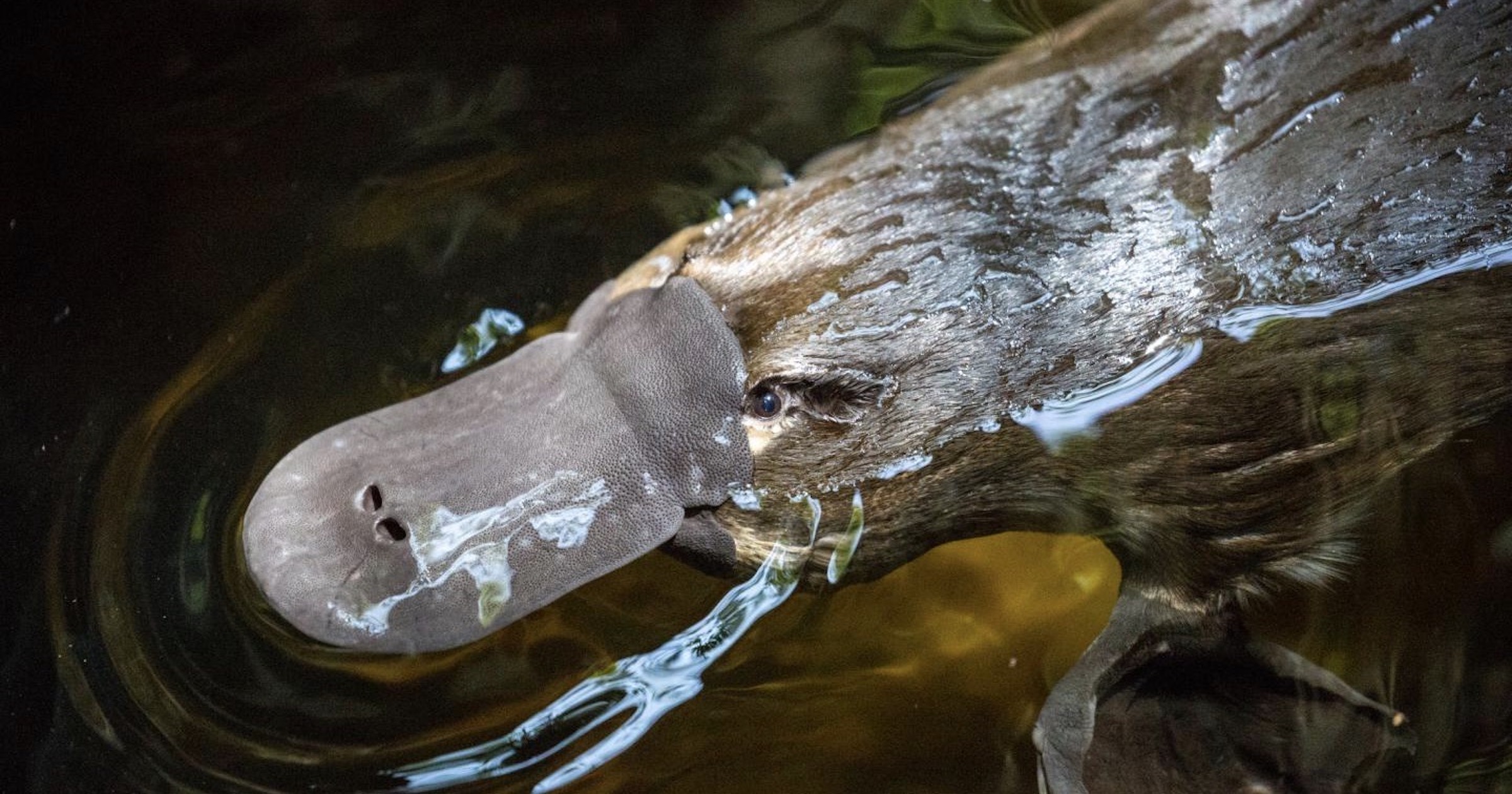 Evolution
Evolution
 Intelligent Design
Intelligent Design
Biofluorescence in the Platypus — Design at Its Whackadoodliest

Feeling stressed about the election and in need of a bit of comic relief? Here is a fun new finding about one of nature’s whackadoodliest of creatures. From Gizmodo:
The platypus is nature’s crazy quilt, as this strange creature looks like about a half-dozen different animals all rolled into one. Turns out that platypuses were hiding yet another conspicuous feature: THEY CAN FREAKIN’ GLOW IN THE DARK.
They report on a paper in Mammalia, “Biofluorescence in the platypus (Ornithorhynchus anatinus).” More:
The finding is also interesting from an evolutionary perspective. Monotremes, marsupials, and placental mammals (eutherians) split off from a common ancestor some 150 million years ago, when the Triassic was coming to a close. That, dear readers, is a hell of a long time ago, as the descendants of this evolutionary divorce had to then fight their way through the ensuing Jurassic and Cretaceous periods, not to mention the mass extinction that wiped out all non-avian dinosaurs. That’s a lot of time and lot of possible evolution.
In a De Gruyter press release, [Professor Paula Spaeth] Anich said that “it was intriguing to see that animals that were such distant relatives also had biofluorescent fur.” The authors close their paper with a related question: “Is biofluorescence an ancestral mammalian trait?”
Hard to know. If these three wildly disparate groups of mammals retained this trait after 150 million years, it means the genes responsible for biofluorescent fur are highly conserved, in the parlance of biologists. It’s not impossible, but another reasonable explanation is that these three species—opossum, flying squirrel, and platypus—acquired their glowing fur independently as a consequence of convergent evolution. In nature, a good idea is a good idea, which is why common traits can appear in unrelated species.
Those paragraphs are, not surprisingly, a de rigueur nod to evolutionary theory, and as usual, it’s pure gloss, no substance, no evidence that the platypus evolved from a fundamentally different animal form via a blind evolutionary process. Is it any less speculative than this classic bit from comedian Robin Williams? You be the judge (warning for the sensitive, Williams is reverential neither to God nor to Charles Darwin). Consider also the alternative hypothesis that the designer has a sense of humor:
